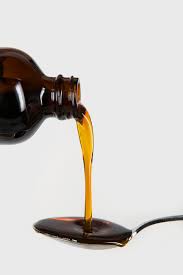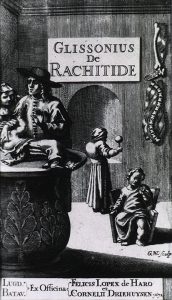Cod Liver Oil
 Sixty years ago, school children in Alberta and BC (and likely in other provinces) were given doses of cod liver oil as a dietary supplement in the winter months. Sometimes it was by the spoonful or through gel capsules. We were told it would give us Vitamin D – the “sunshine vitamin”, needed to build strong bones in children. (My younger brother and I liked to squeeze out the cod liver oil and chew the capsules like gummies.)
Sixty years ago, school children in Alberta and BC (and likely in other provinces) were given doses of cod liver oil as a dietary supplement in the winter months. Sometimes it was by the spoonful or through gel capsules. We were told it would give us Vitamin D – the “sunshine vitamin”, needed to build strong bones in children. (My younger brother and I liked to squeeze out the cod liver oil and chew the capsules like gummies.)
Vitamin D is a nutritional term, rather than a scientific one, and vitamin D deficiency is a modern disease.
The effects of Vitamin D deficiency have been recognized for at least 300 years –rickets in children, and osteomalacia in adults. The formal recognition of Vitamin D occurred about 100 years ago [i] when Sir Edward Mellanby induced rickets in dogs, and then cured them of the disease with cod-liver oil. Even further back in history, Northern cultures often included fermented fatty fish oil, such as cod by the Norse in Scandinavia[ii] or eulachon (ooligan) by Indigenous peoples of the Pacific Northwest[iii].
 Rickets is a bone disease caused by lack of calcium. Lithographs from the 1600s showed children with bowed legs and deformed bones suffering from the disease.
Rickets is a bone disease caused by lack of calcium. Lithographs from the 1600s showed children with bowed legs and deformed bones suffering from the disease.
The process by which causes and effects came together combined folk knowledge with keen observations. In the late 1700s, an English physician by the name of Percival advocated cod-liver oil for treating rickets. Around 1830, Sniadecki, a Polish physician noticed that city-dwelling children were much more likely to have rickets than country-dwelling children[iv]. Much discussion in the 1890s and into the 1900s centred around whether rickets could be caused by a dietary deficiency. Theobald Palm, a medical missionary in Japan and China, suggested that lack of sunlight led directly to the development of rickets. Many experiments were performed where laboratory animals and children with rickets were cured when exposed to sunlight or mercury lamps.
Vitamin D quickly became known as the Sunshine Vitamin. It enters the body two ways; either in one’s diet or made when one’s skin is exposed to direct sunlight (UV rays). Jones (2018) writes that Vitamin D is required by all vertebrates to maintain blood calcium and phosphate levels and thereby support a normal skeleton.
People who live above the 37th Parallel do not receive enough direct sunshine from September to March to synthesize Vitamin D.
The New England Journal of Medicine suggests that 5 to 30 minutes of direct sun exposure between 10 am and 3 pm at least twice a week usually leads to sufficient Vitamin D synthesis[v]. Norval (2005) writes that exposure of 6% of the skin surface to summer sunlight for about 30 minutes on a clear day in the UK is like taking 10 mg. of Vitamin D. She suggests we should expose ourselves to an “intelligent” amount of sunlight, and take into consideration implications of skin cancer.
As an aside, vertebrates such as llamas and alpacas have adapted to their high altitude environment and sometimes get Vitamin D deficiency when they are moved to lower altitudes in temperate regions (Uhl, 2018).
According to Health Canada, very few natural foods contain adequate Vitamin D[vi] – the ones that do include fatty fish such as salmon, tuna, and mackerel, egg yolk, mushrooms, and fish liver oils. The invention of Pablum at Toronto’s Hospital for Sick Children in 1931 helped prevent infant malnutrition[vii]. The Pablum formula of pre-cooked and dried food was fortified with Vitamin D [viii].
In 1942 the first ever Canada Food Rules[ix] recommended that all children receive supplemental cod liver oil. In the 1949 version, the recommendation became “required”.
This strong tone continued through the next few revisions until the Nutrition Canada Survey of 1971-73 identified inadequate intakes of Vitamin D. It required the fortification of milk starting in 1974. Other foodstuffs such as orange juice, margarine, and ready-to-eat cereals became fortified with Vitamin D in the 1970s. Rickets is now rare in Canada. It still occurs in parts of Europe where fortification has not been made law.
Vitamin D has been linked to the prevention of auto-immune diseases and lowering the risk of several types of internal cancers. This is particularly important for people with health conditions such as Crohn’s, Celiac, and other diseases causing fat malabsorption.
Medical experts these days suggest that all adults over the age of 50 take a Vitamin D supplement. As in all medical matters, one’s physician should be consulted before taking supplements.
Since 1974, Canadian school children have not had to take cod liver oil supplements.
Endnotes
[i] Jones, 2018
[ii] Lutefisk, cod treated with lye, is beloved by some Scandinavians. See R. Kirchner’s article in the Twin Cities Agenda, a publication out of Minnesota, https://tcagenda.com/2017/the-sunshine-vitamin/
See an explanation of lutefisk at: https://www.smithsonianmag.com/travel/scandinavians-strange-holiday-lutefisk-tradition-2218218/
The Central American method of mixing together corn and lye to increase digestibility is another example of traditional food treatments with accompanying health benefits: https://en.wikipedia.org/wiki/Nixtamalization
[iii] See BC Food History post about ooligan: https://bcfoodhistory.ca/ooligan-grease-by-gale-smith/
[iv] Mozoåowski, W. (1939). Jäccaron;drzej Sniadecki (1768–1838) on the Cure of Rickets. Nature, 143, 121.
[v] Holick, M. (2007). Vitamin D deficiency. New England Journal of Medicine, 357 (3), 266-281. doi: 10.1056/NEJMra070553. Please note there is controversy about Holick’s recommendations especially regarding tanning.
[vi] See Health Canada website: Vitamin D – Canada.ca
[vii] Breastmilk alone according to the Centre for Disease Control in the US does not provide Vitamin D, even if the mother has sufficient amounts in her diet, and it’s suggested that infants are not put in direct sunlight for their first six months. Check with your physician. Vitamin D | Breastfeeding | CDC
[viii] Canadian invention of Pablum. See: https://www.canadianaconnection.com/2012/03/pablum/
[ix] https://www.canada.ca/en/health-canada/services/canada-food-guide/about/history-food-guide.html#a1942
Selected References
Jones, G. (2018). The discovery and synthesis of the nutritional factor vitamin D. International Journal of Paleopathology, 23 (December), 96-99.
Hamilton, L., Tipton, K., & Witard, O. (2016, April 7). https://theconversation.com/the-backlash-against-fish-oil-has-been-overcooked-heres-why-57254
Norval, M. (2005). A short circular history of Vitamin D from its discovery to its effects. Res Medica, 269 (2), 57-58.
Uhl, E. (2018). The pathology of vitamin D deficiency in domesticated animals: An evolutionary and comparative overview. International Journal of Paleopathology. https://doi.org/10.1016/j.ijpp.2018.03.001
